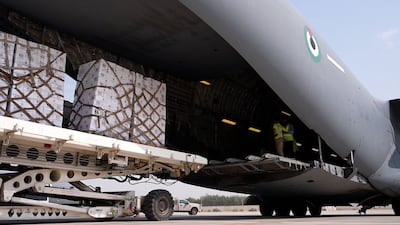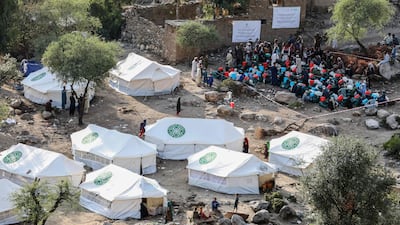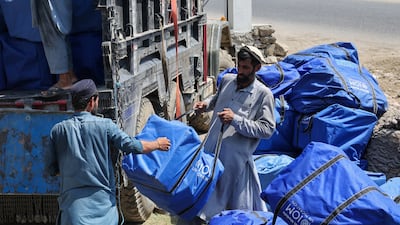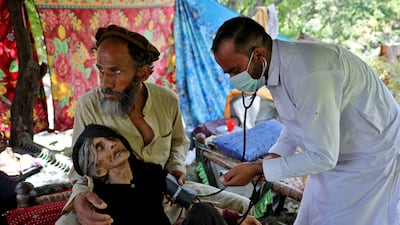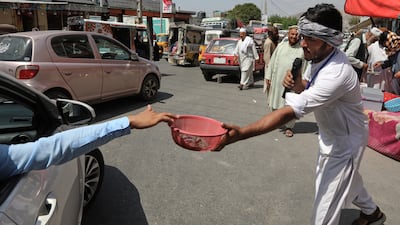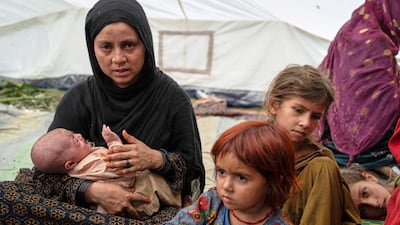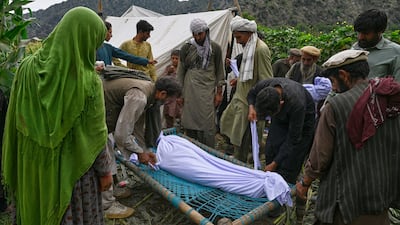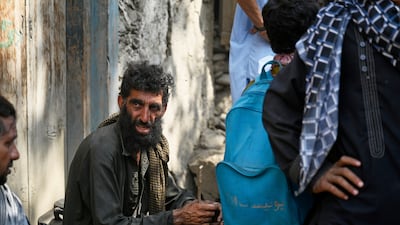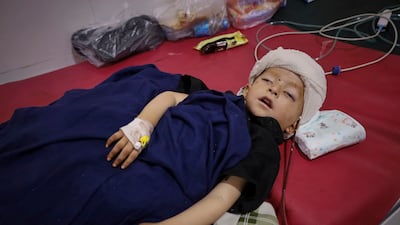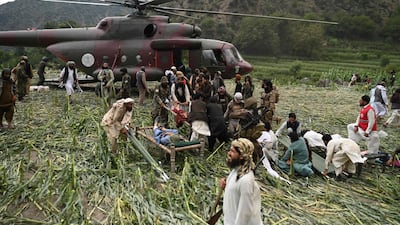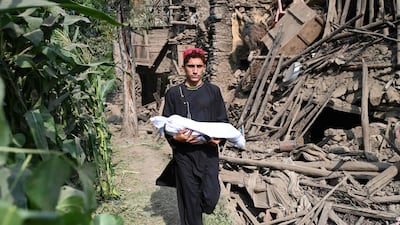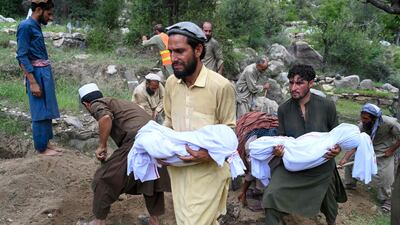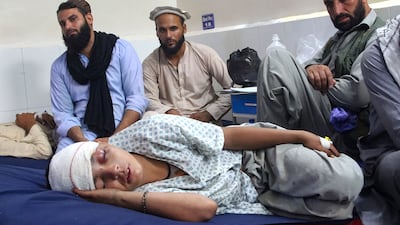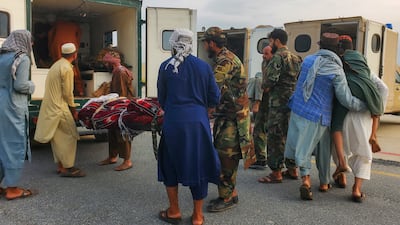Beds are crammed into hallways and staff work round the clock at Nangarhar Regional Hospital, in Afghanistan's eastern city of Jalalabad, as it struggles to treat a flood of patients injured in three devastating earthquakes that shook the country this week.
Bereaved and injured people sit in the wards and stare ahead in a daze.
The hospital has been overwhelmed since the quakes and their aftershocks hit the region over six days, to create one of Afghanistan's worst natural disasters in recent years.
The first quake struck overnight into Monday leaving more than 2,200 dead and at least 3,640 people injured. Thousands of houses were destroyed.
A second earthquake of 5.5 magnitude on Tuesday halted rescue operations, as the death toll continued to rise.
Another 5.6-magnitude earthquake hit the region on Thursday night.
“We have no home to go back to and no one to provide for us any more,” one patient, Razo, 28, tells The National as her mother sits beside her.
They are among eight women and children who survived in her household but, with no surviving male relatives, they are fearful of the future.
The hospital, which is usually only able to accommodate about 650 patients, serves Afghanistan's eastern region.
It has so helped more than 950 patients affected by the quake and carried out 180 medical procedures.
It has been forced to cancel all non-emergency procedures as it devotes all its resources to quake victims.
Staff are under immense strain, but hospital director Fahimullah Dilawar fears it will only get worse as more aftershocks hit the region and roads are being cleared in remote rural areas, allowing more patients to reach the medical centre.
“Rescuers are just now reaching new villages and pulling people from under the rubble,” he tells The National.
Gul Rahman was among the rush of wounded Afghans who poured through the hospital's doors.
He says the late hours of Sunday are an ordeal he will never forget. He cannot quite piece together the events that took place once the ground started to shake shortly before midnight.

What Mr Rahman does remember is an enormous crashing sound from above and sudden pain in his head as the quake rocked his home in Nurgal, a remote mountainous area of Kunar province that had some of the highest casualty and property destruction rates, with falling mountainside boulders crushing hundreds of houses.
“The house just fell apart. Everything collapsed,” the 33-year-old says from a bed at the Nangarhar hospital, where he is being treated for head injuries.
He lost 22 members of his family to the disaster. Only three survived – his two toddler boys and a sister-in-law who suffered severe injuries. Mr Rahman has undergone neurosurgery and his sister-in-law hip surgery.
But at least they made it to the hospital. Many other Afghans have not been so lucky. Blocked roads and rugged mountain terrain have rendered the journey impossible for large numbers of wounded.
Many victims' bodies remain trapped under mud. Patients who spoke to The National at the hospital said they were saved from under rubble by neighbours.
“They dug us out with their bare hands,” Mr Rahman says.
Falling boulders coupled with the darkness of the early morning made his trip to the hospital treacherous on a largely unpaved road, he adds
Although Afghanistan's Taliban authorities sent dozens of military helicopters to aid injured people, the mountainous terrain in Kunar made landing impossible.
“The helicopter was too far away, the neighbours had to carry us on cots for two hours” along a damaged road full of rocks, debris and boulders, much of which could only be seen with the help of mobile phone lights, Mr Rahman says.
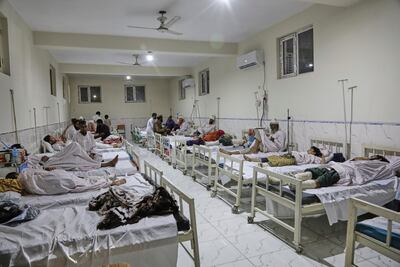
At the hospital, staff are making do in extremely difficult conditions. The influx of patients and increase in surgery requirements − including a large number of procedures for head and spinal traumas − has tested the centre.
“We’ve been focusing entirely on the earthquake victims,” director Mr Dilawar says. The surge meant they had resorted to setting up dozens of beds in hallways.
The frenzy has even affected orderlies who maintain the wards.
Dil Jan has been working in the women’s post-op wards for seven years and says she had never been so busy.
As the staff member in charge of admissions to the women and children's ward, she says she feels an extra responsibility to keep patients safe.
“It’s a women’s ward, they’re all injured,” she says. “Some don’t even know where they are, so we have to make sure every woman feels safe at all times.”
But her duties have stretched the elderly woman’s stamina. “I don’t have time to eat properly. Even when I pray, I say the last few words and immediately rush back to the door,” she says.
